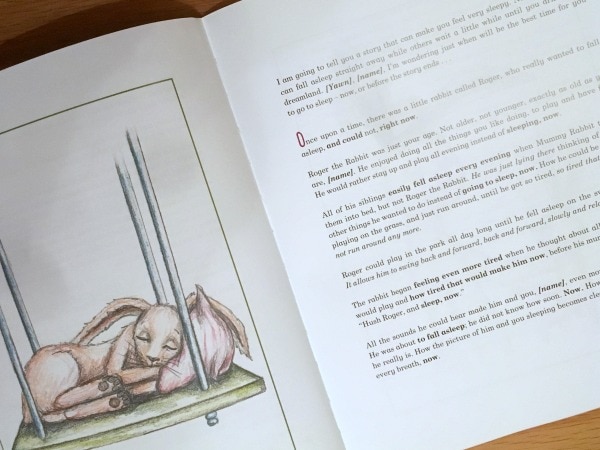The Parent’s Guide to Bedtime: Learn from “The Rabbit Who Wants to Fall Asleep”
Oh, sweet slumber! When your little one has trouble falling asleep, the nights can feel endlessly long, right? Welcome to your comprehensive guide inspired by the enchanting book, “The Rabbit Who Wants to Fall Asleep”! This isn’t just any bedtime story; it’s a magical journey crafted by Carl-Johan Forssén Ehrlin to help children find their way to the Land of Nod with ease, and guess what? It’s about to transform your nighttime routine as well!
Understanding “The Rabbit Who Wants to Fall Asleep”
Before we hop into it, let’s cuddle up to the concept behind this global phenomenon. This revolutionary book uses psychological techniques and carefully designed sentences to lull your child to sleep. But how can a mere story do that, you ask? It’s all about the power of suggestion, rhythm, and a cozy narrative that guides young listeners into a state of relaxation and, eventually, sleep.
Tailoring the Story to Your Bedtime Ritual
Every family’s bedtime ritual is different, and that’s the beauty of it! The key to success with this book is making it a part of your unique evening dance, incorporating gentle directives from the story to nudge your child toward dreamland. Whether you’re replacing a cherished story or adding to your repertoire, “The Rabbit Who Wants to Fall Asleep” offers versatility and effectiveness for all.
Setting the Scene for Sleep
Creating a sanctuary that encourages sleep is step one. Think dim lights, a temperature-controlled room, and a feel-good atmosphere. The setting is crucial for the tale to work its magic. Make sure it’s quiet, peaceful, and free from distractions. No blaring TVs or loud conversations—just a tranquil space resembling a rabbit’s cozy burrow.
Let’s Talk Voice and Tone
The rhythm and pace of your voice are tools of wonder in this sleepy saga. Slow and calm, your voice will mimic the lulling cadence of a lullaby, reinforcing the drowsiness that the book aims to induce. Don’t rush; take time with each sentence, as if each word were a gentle nudge into the arms of Morpheus.
As we delve deeper into the world of peaceful bedtimes, remember that every child is unique. What works for one might need tweaking for another. No need to stress though – “The Rabbit Who Wants to Fall Asleep” is flexible enough to adapt to various bedtime challenges. Now, let’s move onto implementing the bedtime cues from the story and weaving them into a routine that suits your family to a T!
Implementing the Bedtime Cues from “The Rabbit Who Wants to Fall Asleep”
In the pages of this charming book, subtle cues are king. They weave through the narrative, barely noticeable to the conscious mind, but oh-so-powerful to the subconscious. Acknowledge the use of a character’s name similar to your child’s, or perhaps introduce a plush rabbit as a physical representation of the story’s hero. These cues create familiarity and a deep connection to the sleep-inducing tale.
And it doesn’t stop at the story’s text. The illustrations also provide a compelling visual journey to complement the narration. With each page turn, the images grow softer, duskier – almost like the setting sun bidding farewell to the day.
Managing Expectations with Patience and Consistency
It’s important to remember that just like learning to ride a bike or tie shoelaces, falling asleep is a skill that takes time to master for some kids. Patience and consistency are your best friends here. “The Rabbit Who Wants to Fall Asleep” might not work on the first try, but with repeated readings, you’re likely to see those sleepy little eyelids getting heavier each night.
Stay tuned! As we continue this guide, we’ll explore specific techniques on how you can maximize the potential of this story, deal with common bedtime tribulations, and ultimately gift your child (and yourself!) with the restful sleep you both deserve. Bedtime struggles are about to become a thing of the past, so get ready to embrace a new era of peaceful nights and sweet dreams.

Five Essential Sleep Preparation Tips Inspired by “The Rabbit Who Wants to Fall Asleep”
Are you seeking a calm, dream-filled night for your little hopper? Leap with joy, as we share five quintessential tips to prepare your child for a restful sleep using the charming methods from “The Rabbit Who Wants to Fall Asleep”, the bestselling book by Carl-Johan Forssén Ehrlin that’s helping parents worldwide. Hush now, let’s embark on this snooze-tastic adventure together!
1. Crafting a Comfortable Sleep Environment
First things first, the perfect sleep environment! Imagine a serene, snug nook, shades drawn with a whisper of moonlight seeping through. A climate-controlled room, not too hot nor too cold, just like our fluffy friends prefer in their burrows. Add a dash of calm with soothing colors and a soft, inviting bed that beckons your little one to cuddle up and drift away.
2. Embrace the Power of Pre-Sleep Routine
Routines are a cornerstone of the bedtime passage. It starts with gentle reminders that it’s almost time to rest. Maybe a warm bath infused with a hint of lavender, followed by donning fresh, comfy pajamas. Sync your child’s pre-sleep routine with the narrative flow of “The Rabbit Who Wants to Fall Asleep”, and watch the yawning begin!
3. Master the Art of Storytelling
Your voice—the most potent lullaby. Start reading in a soft, melodic tone. Each word slower than the last; a sleepy symphony. This book is a unique lullaby of its own, with a tranquil melody woven through its words. Whisper the rabbit’s adventures and your child will follow, led gently down the warren of sleep.
4. Introduce Sleep-Inducing Characters and Props
A plush rabbit, just like the star of our story, can be a brilliant sleep companion—a friendly, snooze-inducing pal. Give your child this tangible friend to clutch as they listen to the tale’s rhythms, and you tether the fictional world to their own. A stroke of a soft ear or a hug before bed might just be the trick to transport them to dreamland.
5. Consistency is Key to Sweet Dreams
Lastly, it’s about steadfast dedication. Stick to the path even if sleep doesn’t envelop your child on the first attempt. Consistency breeds comfort, and with each night’s tale, the sandman’s visit becomes more assured. So, cuddle up, be patient, and let the magic of the book whisk your little one to a night of peaceful slumber, night after night.
Enhancing “The Rabbit Who Wants to Fall Asleep” Experience
Now, parents, it’s your time to shine! With the right ambiance and a dedication to routine, “The Rabbit Who Wants to Fall Asleep” will not only be an endearing story but a powerful sleep aid. Integrate these tips into your bedtime repertoire and you’ll transform your evenings from a battle against the clock to a harmonic ritual that both you and your child look forward to.
Embrace the journey to dreamland, for tonight, your child doesn’t just get a story—they receive a passport to the enchanting realm of sleep. Sweet dreams are no longer just an expression, but a nightly reality. May your bedtime adventures be filled with fluffy bunnies, twinkling stars, and the softest of snoozes!
See more great Things to Do with Kids in New Zealand here. For more information see here
Disclaimer
The articles available via our website provide general information only and we strongly urge readers to exercise caution and conduct their own thorough research and fact-checking. The information presented should not be taken as absolute truth, and, to the maximum extent permitted by law, we will not be held liable for any inaccuracies or errors in the content. It is essential for individuals to independently verify and validate the information before making any decisions or taking any actions based on the articles.




